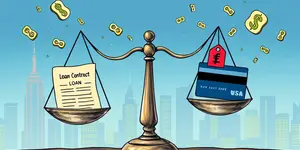
Juggling multiple debts can feel overwhelming, with high interest rates and separate due dates draining your energy and resources. This article explores how debt consolidation through a personal loan can offer a clear path to financial freedom and peace of mind.
Debt consolidation involves merging several debts into one loan, often with a lower interest rate and a single monthly payment. By replacing multiple obligations with a single, predictable payment, you can streamline your monthly payments and free up mental space.
Typically, the process targets unsecured debts such as credit cards, medical bills, payday loans, and certain personal loans. Secured debts like mortgages or auto loans are not usually eligible for this strategy, since they carry collateral and different terms.
Most borrowers turn to unsecured, fixed-term personal loans offered by banks, credit unions, or online lenders. Once approved, these funds pay off existing creditors, leaving you with one new loan account.
Some lenders will send payment directly to your creditors, while others deposit the consolidation amount into your account for you to settle outstanding balances. This flexibility allows you to choose the method that feels most convenient.
Using a personal loan for debt consolidation can deliver multiple advantages, especially for those with strong credit histories and disciplined spending habits.
While consolidation can be powerful, it is not without drawbacks. Borrowers must weigh these risks before committing.
Debt consolidation may be ideal if you meet certain criteria. Prospective candidates often share these traits:
Multiple high-interest credit card balances A good to excellent credit score A desire for predictable, manageable payments
If you are motivated to change spending habits and stick to a budget, leveraging a personal loan can become part of your broader financial strategy.
Not everyone benefits from this approach. Consider skipping consolidation if:
Your credit is too poor to secure favorable rates Interest rates or fees on a consolidation loan exceed your current costs You cannot commit to avoiding new debt
In these scenarios, alternative solutions may deliver better results.
Personal loan APRs for consolidation generally range from 5% to 36%, depending on creditworthiness and lender practices. Loan amounts often span $2,500 to $40,000 or more, with repayment terms between 12 and 84 months.
To maximize your success, combine consolidation with sound financial habits. Always read the fine print on fees and penalties and consider working with a credit counselor if you need guidance. Create a realistic budget, track expenses closely, and set automatic payments to ensure consistency.
Build an emergency fund to avoid relying on credit for unexpected costs. By planning ahead, you can maintain control over your finances and prevent future debt cycles.
If a personal loan is not the right fit, explore these options:
Balance transfer credit cards often offer 0% introductory APR for 12–21 months but may include transfer fees and require high credit scores.
Home equity loans or lines of credit (HELOCs) can provide large sums at lower rates but carry the risk of using your home as collateral.
Debt management plans through nonprofit credit counseling agencies can negotiate lower rates and consolidate payments without taking out a new loan.
Debt consolidation won’t solve underlying spending problems. It succeeds only if you commit to responsible habits and avoid new borrowing during repayment.
By evaluating your situation, comparing options, and maintaining discipline, you can transform your financial outlook and move toward a life free from debt-related stress.
References













